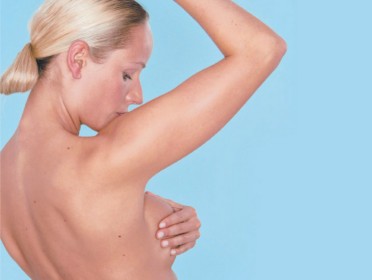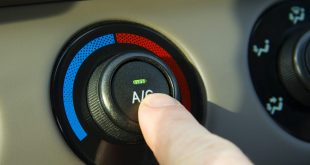
You wake up one morning, feeling perfectly fine. You start your day, hop into the shower and get a shock – you’ve found a lump in your breast. So what should you do?
Firstly, don’t panic, says Dr Julie Thompson, resident clinical advisor at the Breast Cancer Network Australia.
“Nine out of 10 lumps discovered aren’t cancer,” Thompson says. “There is a whole range of benign conditions that cause lumps, such as simple cysts, which are little fluid-filled areas in the breast. Or it could be a lump of tissue that has become a bit overgrown.”
Regardless of this, you should always see your local GP straight away whenever you notice any kind of change in your breast. “The important message is don’t put off going if you find a change,” Thompson says. “Should it be cancer, the earlier it’s found the better your chances are of a good long-term prognosis. Early detection saves lives.”
Watch out for any changes
A change in your breast may not always come in the form of a lump, so there are a few different things you should be aware of.
“We encourage women to become breast aware,” Thompson says. “That means being familiar with the look and feel of your breasts so that if you notice a change you can act on it. In addition to lumps, look for thickening, areas of soreness, nipple change, skin change or shape change.”
In addition to self-testing, Thompson recommends asking your GP to check your breasts every two years when you have your Pap Smear done.
Free mammogram screening is also offered nationwide for women over 40. “The target demographic for free mammogram screening is 50 to 69 years of age, so this is the only group who are sent regular reminders,” Thompson says. She advises against relying on mammograms alone, however, saying a combined approach to checking for breast cancerworks best.
“At the moment about 50 per cent of breast cancers are picked up by the mammogram screening, the rest are found because a woman notices a change or her GP notices a change,” she says.
See your GP
If your GP suspects you may have breast cancer, you will be referred for a mammogram and a targeted ultrasound. While a mammogram is a low-dose radiation X-ray, a targeted ultrasound has no radiation and is very safe.
“The ultrasound gives you extra information,” Thompson says. “It will tell if it’s a solid lump or a fluid-filled lump, such as a cyst.”
If the combination of symptoms and tests suggests the lump might be a cancer, this is where a breast surgeon usually gets involved. You will be sent for a core biopsy, under the same ultrasound machine, which can then be examined under a microscope.
“The system works very well and there are very clear guidelines about what happens after that,” Thompson says. “You would normally receive the results of a core biopsy within 48 hours, and then you can discuss your options after that.”
Early treatment, good prognosis
The good news is that the long-term survival rates for early breast cancer detection are about 90 per cent.
“Because breast cancer is so common, we all know at least one woman who has died from it, but with early treatment, most women go on to live long, normal lives,” Thompson says.
“We have good diagnostic techniques, treatments are really improving and we have evidence-based guidelines so that no matter where you are in the country you’ll get very consistent care.”
“Doing a monthly self-check saved me”
Heather McAlpine, 53, found a lump while doing a self-check.
“I had been doing monthly checks in the shower for a while when I found a lump. I was diagnosed with lobular cancer, which is very hard to detect. I had two operations, chemotherapy for five months, followed byradiation. After my radiation treatment, my husband took me to Alaska for six weeks to celebrate. Now I’m on hormonal treatment, which means I have to take tablets that kill my oestrogen. I have another three and a half years on medication before I get the all clear, but I’m so glad it was detected early.”
“Acting quickly gave me a good prognosis”
Sarah Singer, 42, found a lump in her breast 10 years ago.
“Within a week of finding the lump, I was diagnosed with breast cancer, had a lumpectomy, a segmental mastectomy and was told I neededchemotherapy and radiotherapy. It was a lot to take in. I’m so thankful I reacted quickly – I know it is partly why my prognosis has been so good. I now have a styling business and offer complimentary consultations to women with breast cancer (visit www.dressyu.com.au). I’m also an ambassador for the National Breast Cancer Foundation.”
Check out our breast cancer zone for everything from how to perform a breast check to our post-masectomy workout.
Source: bodyandSoul
 We are sharing information for knowledge. Presented by. SocialDiary.Net
We are sharing information for knowledge. Presented by. SocialDiary.Net



